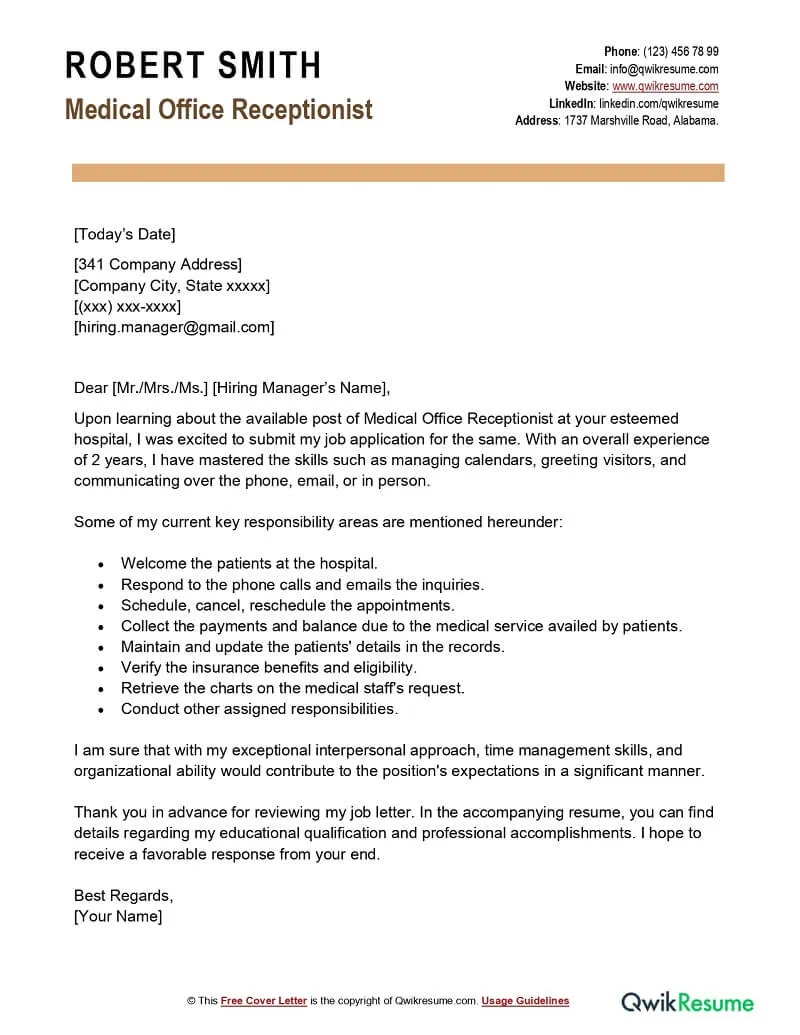Understanding the Importance of a Medical Receptionist Cover Letter
A medical office receptionist cover letter is more than just a formality; it’s your first chance to make a lasting impression on a potential employer. In a competitive job market, a well-crafted cover letter can be the deciding factor in whether your application gets a second look. It provides a platform to showcase your personality, skills, and enthusiasm for the role, going beyond what’s listed in your resume. By demonstrating your understanding of the position and the specific needs of the medical practice, you increase your chances of securing an interview and ultimately, the job. This guide will walk you through every step of creating a compelling cover letter that sets you apart from the competition, emphasizing why a cover letter is essential for any medical office receptionist position.
Why a Cover Letter is Essential
While your resume outlines your experience and qualifications, a cover letter gives you the opportunity to explain them in context and highlight your unique value proposition. It allows you to connect your skills to the specific requirements of the job, demonstrating your genuine interest in the role and the organization. It provides a space to address any gaps in your resume, explain career transitions, or elaborate on achievements. Moreover, a cover letter reflects your communication skills, attention to detail, and professionalism – all crucial qualities for a medical receptionist. A well-written cover letter demonstrates that you’ve done your research, understand the clinic’s mission, and are eager to contribute to their success. It shows that you’re not just sending out a generic application, but that you’re truly interested in the specific opportunity.
Key Components to Include in Your Cover Letter
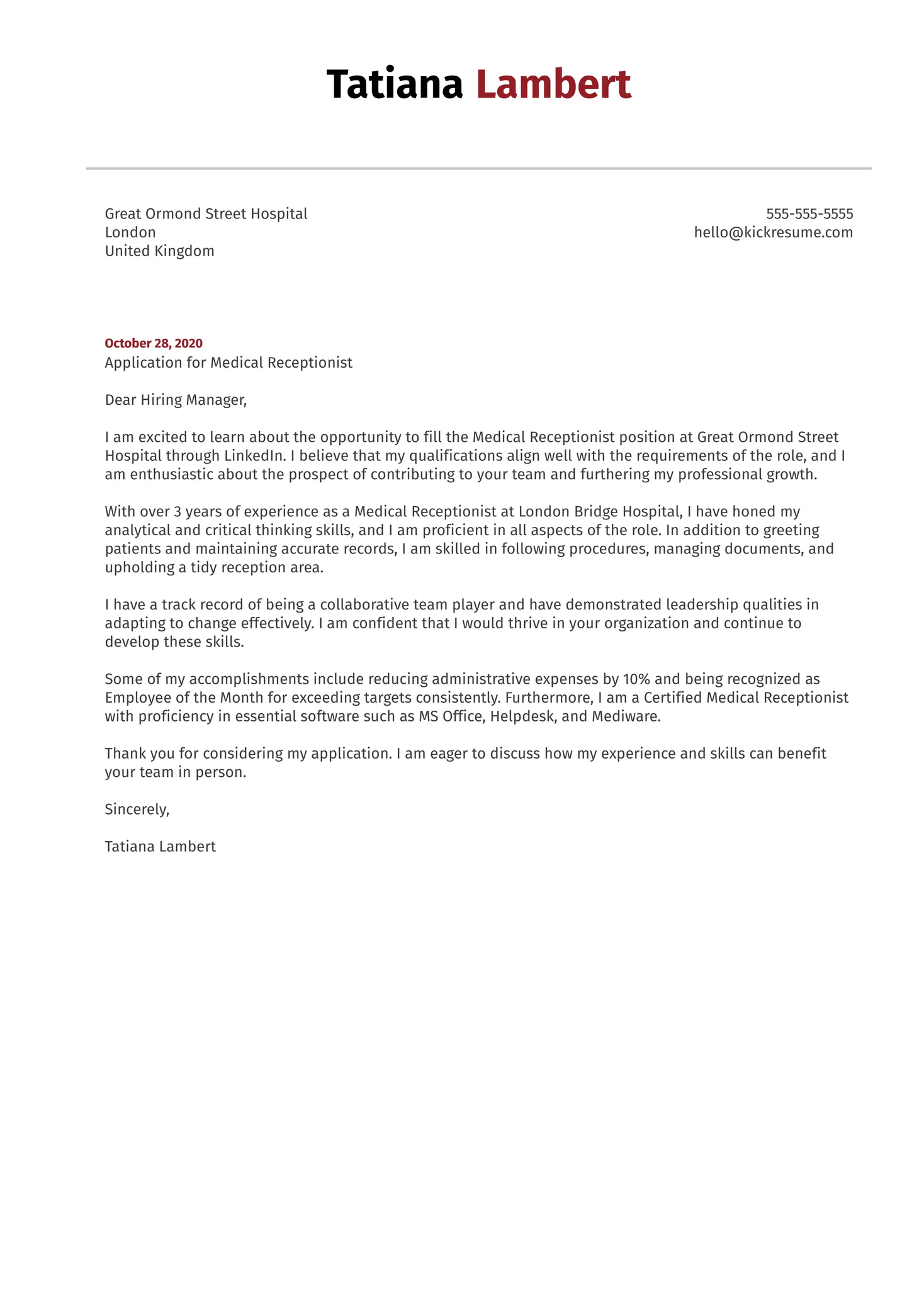
A strong medical receptionist cover letter includes several key elements. These components, when combined effectively, create a compelling narrative that showcases your suitability for the position. Each element plays a crucial role in demonstrating your skills, experience, and personality, making your application stand out. Let’s delve into each of these key elements to understand how to incorporate them into your cover letter, creating a professional and persuasive document. These include your contact information, the hiring manager’s details, a compelling opening, highlighting relevant skills and experiences, addressing specific job requirements, structuring the body paragraphs, and a strong closing.
Your Contact Information and the Date
Begin your cover letter by including your full name, address, phone number, and email address. Place this information at the top left of the page. Below your contact information, include the date you are writing the letter. This simple yet essential step ensures the recipient knows who you are and how to reach you, facilitating communication should they wish to contact you about your application. Ensure your email address is professional. Consider using a combination of your first and last name, rather than a nickname or something that may seem unprofessional.
The Hiring Manager’s Contact Details
Directing your cover letter to a specific person within the medical practice adds a personal touch and demonstrates that you’ve taken the time to research the organization. If you can find the hiring manager’s name, address them directly. This shows initiative and attentiveness. If a specific name isn’t available, you can use a title like ‘Hiring Manager’ or ‘Human Resources Department’. Always include the practice’s address to make sure your letter lands at the correct location. This attention to detail can significantly enhance your application.
Crafting a Compelling Opening Paragraph
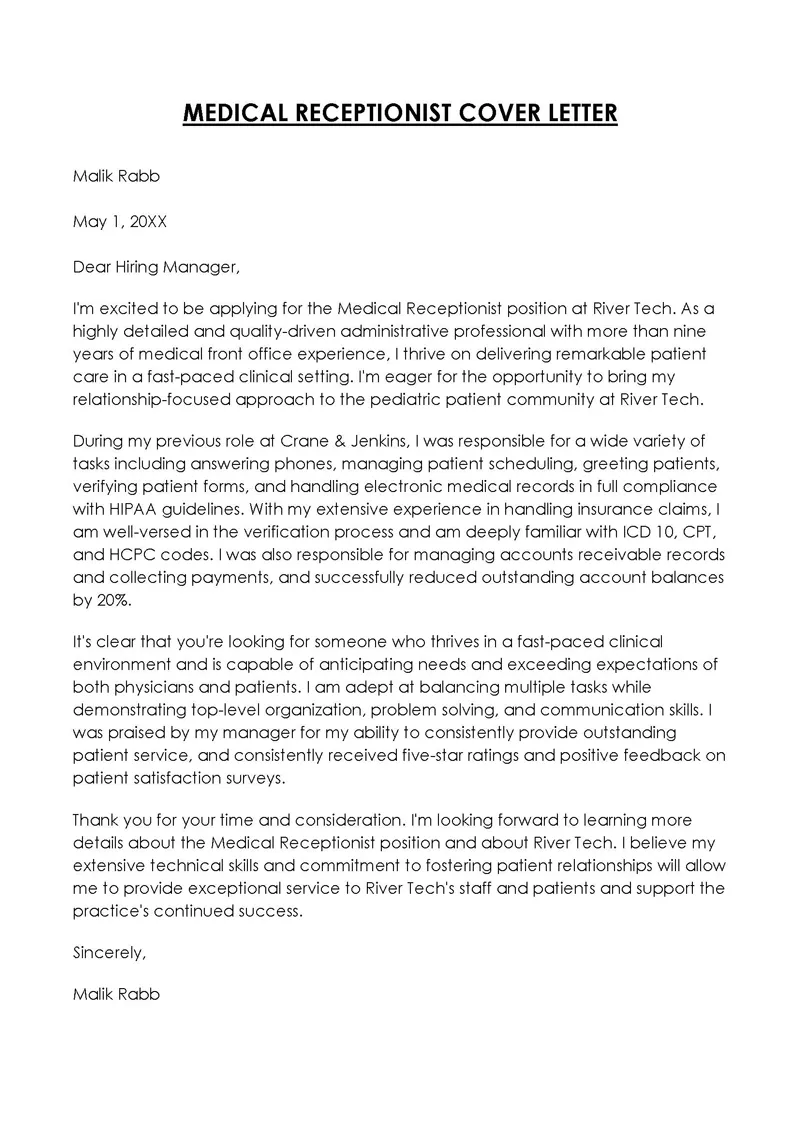
Your opening paragraph should immediately grab the reader’s attention and make them want to read more. Clearly state the position you’re applying for and where you found the job posting. Briefly mention why you’re interested in the role and the medical practice. Show enthusiasm and connect your skills with the needs of the clinic. Avoid generic openings; instead, personalize your introduction to reflect your genuine interest in the opportunity. A strong opening sets the tone for the rest of your letter and ensures the hiring manager understands why you’re applying and what you hope to achieve.
Highlighting Your Relevant Skills and Experience
The body of your cover letter is where you showcase your relevant skills and experience. Focus on the qualifications that align with the job description. Highlight your experience in managing patient appointments, handling phone calls, managing medical records, and working with electronic health records (EHR) systems. Include any experience with insurance verification, billing, or patient communication. Use action verbs to describe your accomplishments and quantify them whenever possible. For example, instead of saying ‘Managed patient scheduling’, you could say ‘Managed patient scheduling for an average of 50 patients per day, reducing wait times by 15%’.
Showcasing Your Medical Knowledge and Abilities
Demonstrate your understanding of medical terminology, patient confidentiality, and healthcare regulations. Mention any certifications or training relevant to medical reception, such as CPR certification or experience with medical software. Describe your ability to interact professionally with patients, doctors, and other staff members. Show how you can handle difficult situations with patience and empathy. Highlighting these abilities assures the hiring manager that you have a solid foundation in healthcare operations. Be specific about your knowledge of medical procedures and office systems. Describe how you have contributed to a smooth patient experience in the past.
Emphasizing Your Soft Skills and Personality
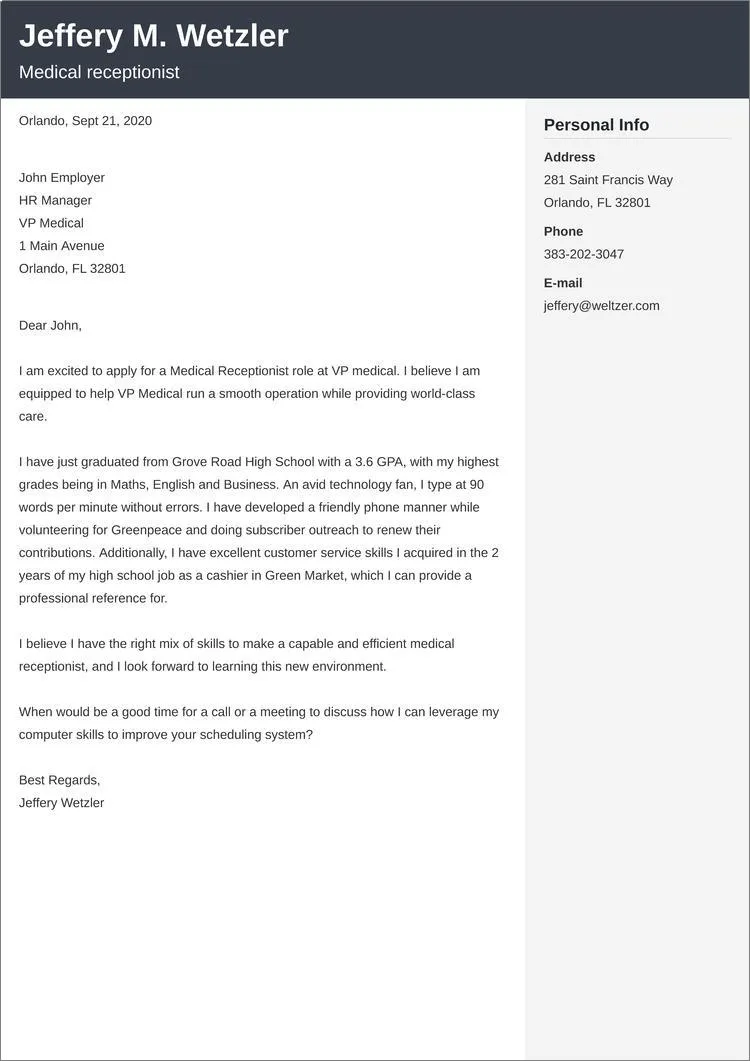
Medical receptionists need excellent interpersonal skills. Highlight your ability to communicate effectively, both verbally and in writing. Showcase your organizational skills, attention to detail, and ability to multitask. Mention your ability to remain calm under pressure and deal with sensitive patient information with discretion. Describe your teamwork skills and your willingness to learn and adapt to new situations. Demonstrate your positive attitude, empathy, and ability to create a welcoming environment for patients. Soft skills are critical in healthcare; ensure these are evident in your letter.
Quantifying Your Achievements (if possible)
Whenever possible, quantify your achievements to provide concrete examples of your capabilities. Instead of saying ‘Improved patient satisfaction’, state ‘Increased patient satisfaction scores by 20% through improved communication and appointment management’. Quantify your experience by mentioning the number of patients you handled, the volume of phone calls you managed, or the efficiency improvements you implemented. Use data to demonstrate your impact and the value you can bring to the medical practice. Quantifiable achievements make your cover letter more impactful and persuasive, showcasing your tangible contributions in previous roles.
Structuring the Body Paragraphs Effectively
Organize your body paragraphs logically, each addressing a specific skill or area of experience. Start with your strongest qualifications and then address others in order of importance. Use clear and concise language, and avoid long, rambling sentences. Break up your paragraphs to improve readability and make it easier for the hiring manager to grasp your key points. Each paragraph should focus on one aspect of your skills and experience, directly tying back to the job requirements. This structure makes your letter easy to follow and ensures that the hiring manager can quickly identify your most relevant qualifications.
Addressing the Specific Job Requirements
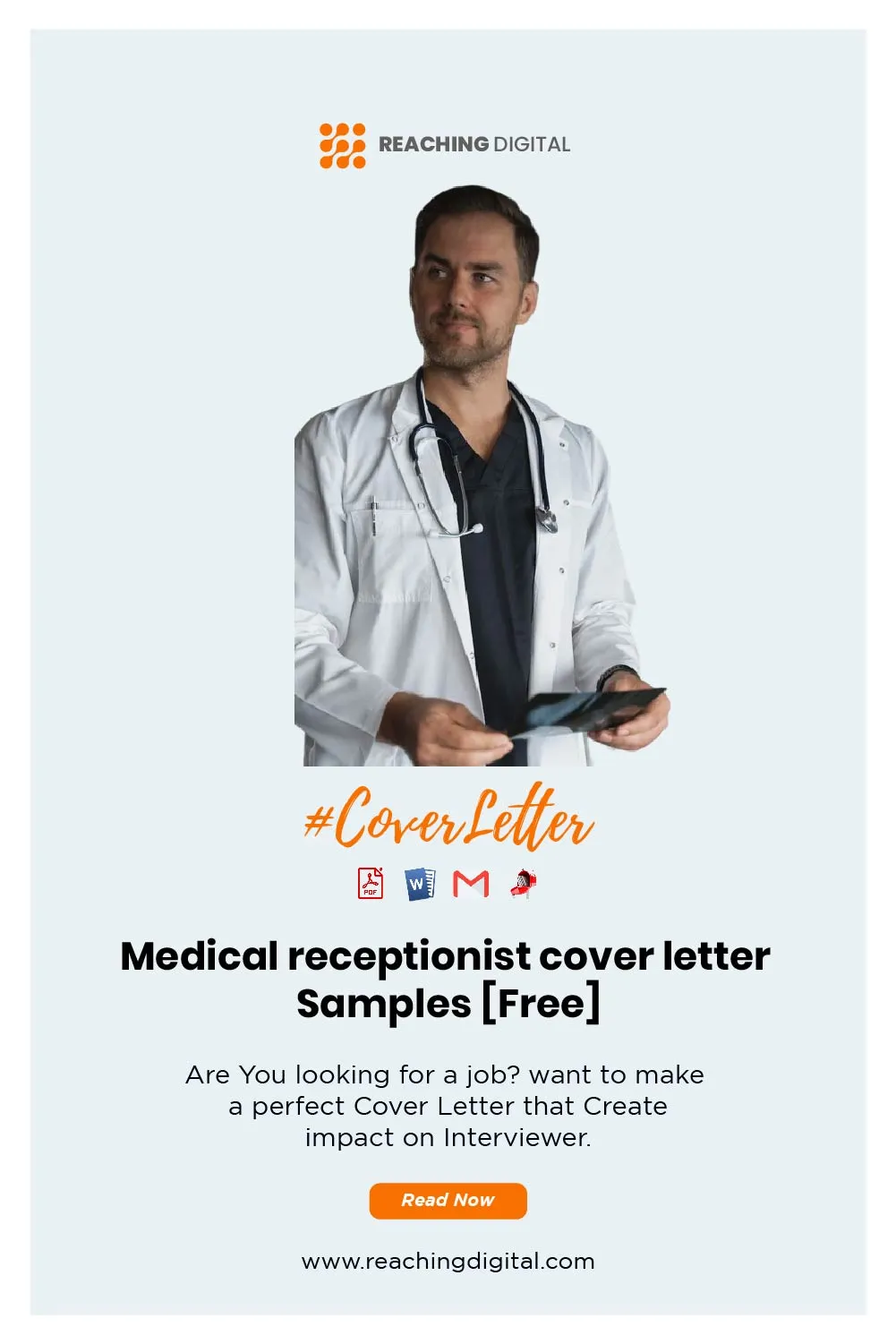
Carefully review the job description and tailor your cover letter to meet the specific requirements outlined. Address each requirement individually, providing examples of how you meet those criteria. Use keywords from the job description to demonstrate that you understand what the employer is looking for. Demonstrate that you possess the necessary skills and experience. For instance, if the job requires experience with a particular EHR system, mention your proficiency with that system and provide examples of your successful use of it. This targeted approach shows that you have taken the time to understand the role and can immediately contribute to the team.
Tailoring Your Letter to the Clinic or Practice
Research the medical practice or clinic to understand its mission, values, and patient demographic. Mention something specific about the organization that resonates with you. This could be their focus on a particular area of medicine, their commitment to patient care, or their community involvement. By demonstrating that you have researched the organization, you show genuine interest and increase your chances of making a positive impression. This personalization makes your cover letter stand out from generic applications and highlights your commitment to the specific opportunity. This shows that you are truly interested in joining their team.
Writing a Strong Closing Paragraph
Your closing paragraph should reinforce your interest in the position and express your appreciation for the hiring manager’s time and consideration. Reiterate your enthusiasm and your belief that your skills and experience align with the job requirements. Include a call to action, such as stating that you are available for an interview at their earliest convenience. Thank the hiring manager for reviewing your application and express your eagerness to discuss your qualifications in more detail. A strong closing leaves a lasting positive impression and encourages the hiring manager to take the next step.
Expressing Your Enthusiasm and Availability
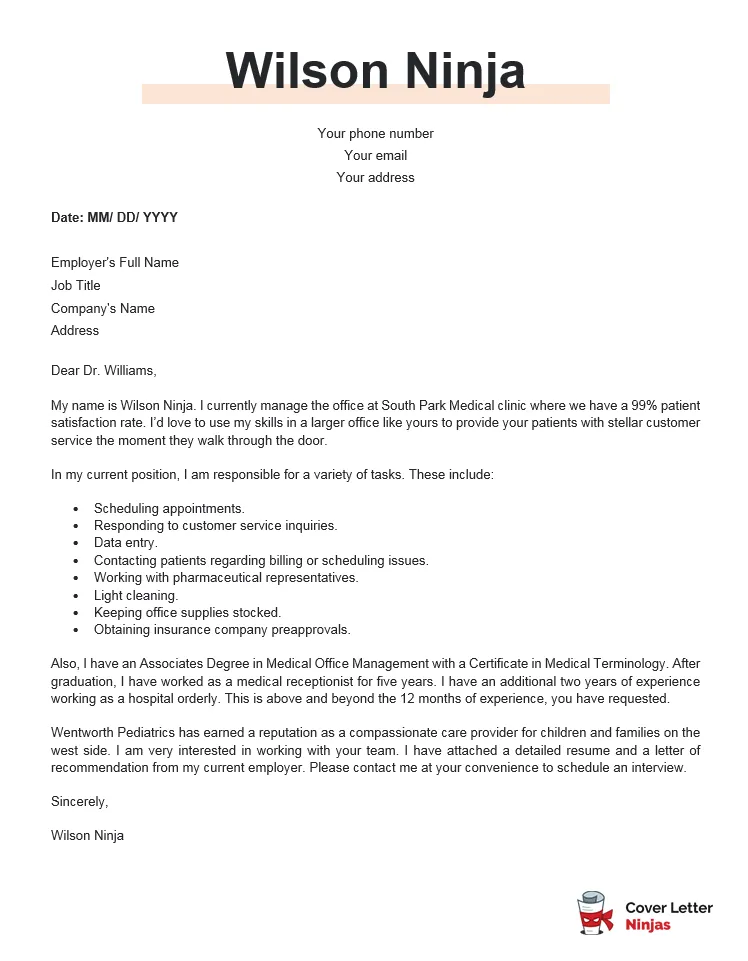
In your closing, make it clear that you are enthusiastic about the opportunity and eager to learn more. Express your availability for an interview, including any specific times or dates when you are available. Make it easy for the hiring manager to contact you by including your phone number and email address again. Avoid sounding overly eager or pushy; maintain a professional and positive tone. Your enthusiasm and clear indication of availability increase the likelihood that the hiring manager will move your application forward.
Proofreading and Formatting for Professionalism
Proofreading and formatting are critical steps in ensuring your cover letter is professional and polished. This step can be the difference between getting a job or being rejected. A cover letter filled with errors can reflect poorly on your attention to detail and communication skills, which are essential for a medical receptionist. This ensures that the hiring manager views you as a professional and prepared candidate. Ensure a clean and easy-to-read format. Be sure to use a professional font and consistent formatting throughout the document. Proofread your cover letter carefully for any grammatical errors, spelling mistakes, and typos. Make sure your sentences are clear and concise. Consider having a friend or family member review your letter for a fresh perspective. Every detail matters, and your efforts will certainly pay off.
Common Mistakes to Avoid in Your Cover Letter
Avoiding common mistakes ensures your cover letter reflects professionalism and enhances your chances of getting noticed. Pay attention to details such as formatting, grammar, and tone. These seemingly small details can have a significant impact on how your application is perceived. These can range from using a bad formatting, to using the wrong tone or using the wrong wording. By avoiding these, you present yourself as a polished candidate ready to contribute to the medical practice.
Improper Formatting
Use a professional and easy-to-read font, such as Times New Roman, Arial, or Calibri, with a font size between 10 and 12 points. Maintain consistent formatting throughout your letter, including spacing, margins, and alignment. Avoid excessive use of bolding, underlining, or italics. Ensure your letter is well-organized and easy to follow. Poor formatting can make your letter look cluttered and unprofessional, making it difficult for the hiring manager to read and assess your qualifications effectively. A well-formatted letter shows that you pay attention to detail and can present information clearly.
Typos and Grammatical Errors
Always proofread your cover letter carefully to catch any typos, spelling mistakes, and grammatical errors. Use spell-check and grammar-check tools, but don’t rely on them entirely. Have a friend or family member review your letter for a second opinion. Errors can undermine your credibility and make you appear careless or unprofessional. A cover letter filled with mistakes creates a negative impression and reduces your chances of landing an interview. Take the time to make sure your writing is polished and error-free.
Generic Content
Avoid using a generic cover letter template that you send to every job application. Tailor each cover letter to the specific job and medical practice. Research the organization and customize your letter to demonstrate your interest and how your skills and experience align with their needs. Generic content shows a lack of effort and a lack of genuine interest in the opportunity. Personalizing your letter demonstrates that you have taken the time to understand the role and the organization, significantly increasing your chances of making a positive impression. It shows that you are serious about the opportunity.
Using the Right Tone
Maintain a professional and polite tone throughout your cover letter. Avoid being overly casual or informal. Use clear and concise language, and refrain from using slang or jargon. Show enthusiasm for the position, but avoid sounding desperate or overly eager. Your tone should convey confidence and professionalism. A negative tone can make you appear unprofessional, while an overly familiar tone can damage your credibility. Ensure your tone is always respectful, appreciative, and enthusiastic.
Tone in the opening
The opening of your cover letter sets the tone for the rest of your application. Start with a strong opening statement that immediately captures the hiring manager’s attention. Clearly state the position you are applying for and where you found the job posting. Highlight your interest in the role and the medical practice. Avoid generic openings, such as ‘I am writing to express my interest.’ Instead, personalize your introduction by stating why you are excited about the opportunity. Ensure it reflects your enthusiasm and provides a reason for the reader to continue. The opening paragraph is your first chance to create a positive impression, so make it count.
Tone in the body
In the body of your cover letter, use clear and concise language to highlight your skills and experiences. Focus on the qualifications that align with the job description and provide specific examples to back up your claims. Quantify your achievements whenever possible to demonstrate your impact. Maintain a professional tone and avoid using overly technical jargon. Your writing should be easy to understand and reflect your ability to communicate effectively. Ensure each paragraph has a purpose, linking your skills to the job requirements. This helps the hiring manager see you as a good fit for the role.
Tone in the closing
The closing paragraph should reiterate your interest in the position and express your appreciation for the hiring manager’s time and consideration. Express your enthusiasm for the role and your belief that your skills and experience align with the job requirements. Include a call to action, such as stating that you are available for an interview at their earliest convenience. Thank the hiring manager for reviewing your application and express your eagerness to discuss your qualifications in more detail. End on a positive note that encourages the hiring manager to take the next step.
By following these guidelines, you can craft a medical office receptionist cover letter that effectively showcases your skills, experience, and enthusiasm, increasing your chances of landing an interview and securing your desired position.
